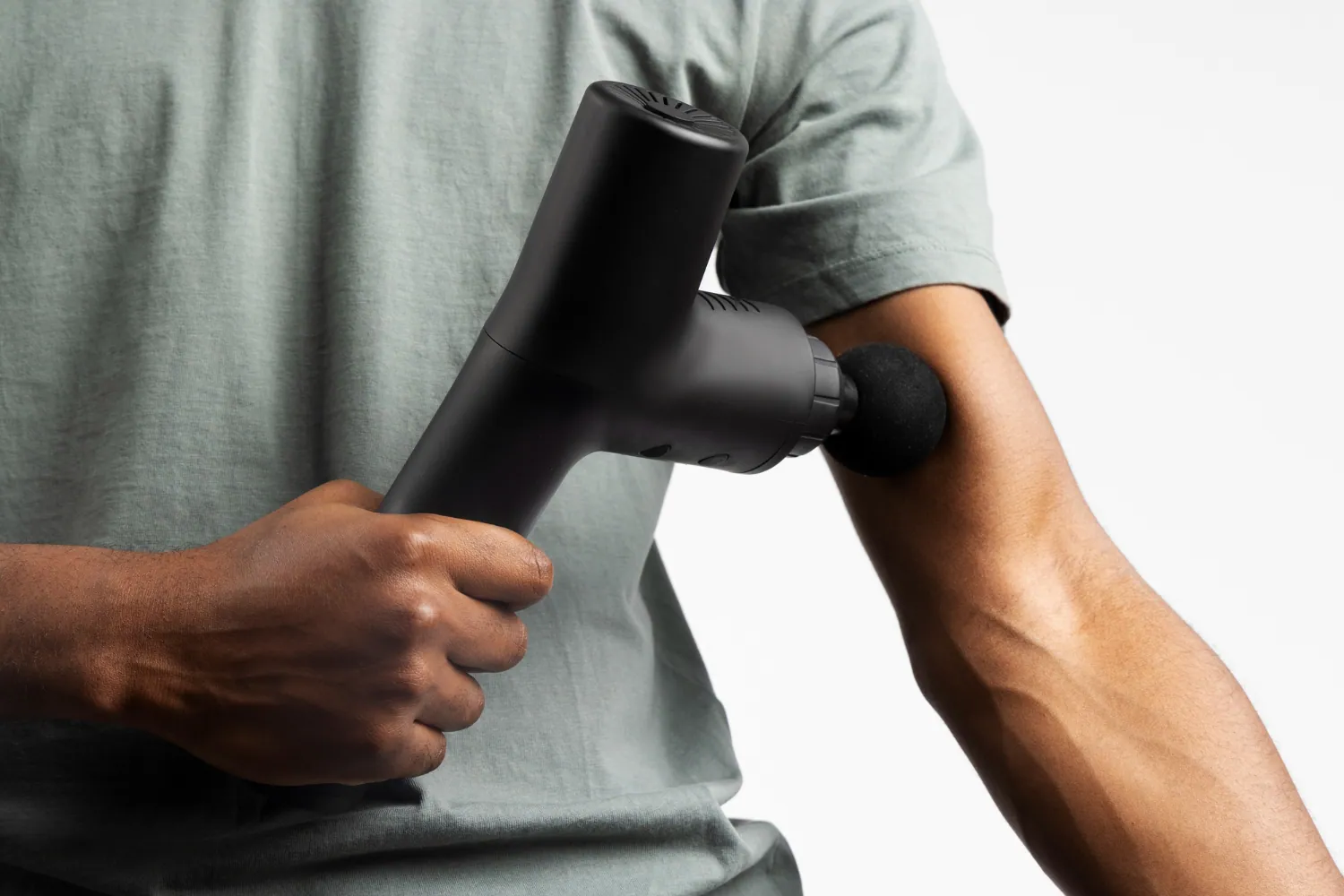Understanding post-workout soreness is essential for anyone engaged in physical exercise, as it can significantly impact your recovery and overall performance. This article provides insights into the causes of delayed onset muscle soreness (DOMS), helping you recognize its signs and symptoms while differentiating between normal discomfort and potential injuries.
Additionally, we will explore effective strategies for reducing soreness through active recovery, proper nutrition, and recovery techniques. By applying this knowledge, you can manage your recovery more effectively and enhance your fitness journey.
In this article you will find:
What Causes Post-Workout Soreness
Post-workout soreness, often referred to as delayed onset muscle soreness (DOMS), is a common experience for many individuals who engage in physical exercise. Understanding the underlying causes of this discomfort can help athletes and fitness enthusiasts manage their recovery effectively. This section delves into the physiological mechanisms that lead to soreness after a workout.
Muscle Microtrauma
One of the primary causes of post-workout soreness is muscle microtrauma. When you engage in strenuous activities, especially those involving eccentric movements—where muscles lengthen while under tension—tiny tears occur in the muscle fibers. This microtrauma is a natural part of the muscle-building process. As the body repairs these micro-tears, it not only heals but also strengthens the muscle, leading to improved performance over time.
Inflammatory Response
Following muscle damage, the body initiates an inflammatory response. This process involves the release of various chemicals, including cytokines and prostaglandins, which help to facilitate healing. While inflammation is essential for recovery, it can also contribute to the sensation of soreness. This discomfort typically peaks 24 to 72 hours after exercise and is a sign that your body is working hard to repair itself.
Metabolic Byproducts
During intense physical activity, the body produces metabolic byproducts, such as lactic acid. While lactic acid is often associated with immediate muscle fatigue during exercise, its role in post-workout soreness is less clear. However, it’s important to note that the accumulation of metabolic waste products can lead to temporary discomfort. As the body clears these byproducts post-exercise, the soreness usually subsides.
Muscle Adaptation
As you continue to train, your muscles adapt to the stresses placed upon them. This adaptation process can lead to variability in soreness levels. Beginners or individuals who increase their workout intensity suddenly may experience more pronounced soreness compared to seasoned athletes who have conditioned their muscles to handle such stress. This principle of adaptation emphasizes the importance of gradual progression in any fitness regimen.
Factors Influencing Soreness
Several factors can influence the degree of post-workout soreness experienced, including:
- Type of Exercise: Eccentric exercises tend to cause more soreness than concentric exercises.
- Workout Intensity: Higher intensity and volume can lead to greater muscle damage.
- Individual Fitness Level: Those new to exercise or returning after a break may experience more soreness.
- Nutrition and Hydration: Proper nutrition and hydration can aid in recovery and reduce soreness.
In conclusion, understanding the causes of post-workout soreness can empower individuals to manage their recovery more effectively. By recognizing the role of muscle microtrauma, inflammation, and other contributing factors, you can take informed steps to minimize discomfort and enhance your performance.
For more insights on managing post-workout soreness, you can explore resources from Mayo Clinic Health System, which discusses recovery techniques that can alleviate soreness.
Signs and Symptoms of Muscle Discomfort
Recognizing the signs and symptoms of muscle discomfort is crucial for anyone engaged in physical activity. While some soreness is a normal part of the recovery process, understanding when discomfort may indicate a more serious issue is essential for maintaining overall health and performance. This section explores the various manifestations of muscle discomfort, helping you differentiate between typical soreness and potential injuries.
Typical Signs of Post-Workout Soreness
Post-workout soreness typically presents itself in a few recognizable ways. Here are the common signs to look for:
- Localized Pain: You may feel a dull, aching sensation in specific muscles that were engaged during your workout. This pain is usually most intense 24 to 72 hours after exercise.
- Stiffness: Muscles may feel tight and less flexible, making movements feel more challenging than usual. This stiffness can affect your range of motion.
- Tenderness: Affected muscles may be sensitive to touch, and you might experience discomfort when stretching or using those muscles.
- Swelling: Mild swelling can occur in the muscles that were worked, indicating inflammation as part of the healing process.
Distinguishing Between Soreness and Injury
While muscle soreness is a common experience, it’s important to differentiate it from signs of injury. Here are some symptoms that may indicate a more serious issue:
- Sharp Pain: If you experience sudden, sharp pain during or after a workout, it may indicate a muscle strain or tear rather than typical soreness.
- Persistent Pain: If soreness lasts longer than a few days or continues to worsen, it could signal an injury that requires medical attention.
- Reduced Strength: Difficulty performing exercises or lifting weights that were previously manageable can indicate underlying muscle damage.
- Joint Pain: Pain that is felt in the joints rather than the muscles may suggest an injury to the joint itself, rather than typical muscle soreness.
Factors Influencing Muscle Discomfort
Several factors can influence the severity and duration of muscle discomfort:
- Exercise Type: Eccentric exercises, which involve lengthening the muscle under tension, tend to produce more soreness compared to concentric exercises.
- Fitness Level: Beginners or those returning after a break are likely to experience more pronounced soreness due to unconditioned muscles.
- Recovery Practices: Inadequate recovery methods, such as poor hydration or lack of proper nutrition, can exacerbate muscle discomfort.
Understanding the signs and symptoms of muscle discomfort is vital for effective recovery and injury prevention. By recognizing the difference between normal soreness and potential injury, you can take proactive steps to ensure your body heals properly and prepares for future workouts.
For more insights into muscle recovery and soreness management, consider visiting HSS, which provides valuable information on overtraining and its effects on muscle health.
Effective Strategies for Reducing Soreness
Post-workout soreness can be a significant barrier to achieving fitness goals, but there are numerous effective strategies to reduce discomfort and expedite recovery. By incorporating these methods into your routine, you can minimize soreness and enhance your overall performance. This section outlines practical approaches to alleviate muscle discomfort.
Active Recovery Techniques
Engaging in active recovery is one of the most effective ways to reduce soreness. This involves low-intensity exercises that promote blood flow to the muscles without adding strain. Some beneficial activities include:
- Light Aerobic Exercise: Activities such as walking, cycling, or swimming at a low intensity can help keep blood circulating, which aids in nutrient delivery and waste removal from the muscles.
- Dynamic Stretching: Incorporating gentle stretches can improve flexibility and reduce stiffness. Focus on movements that target the muscle groups you worked during your exercise session.
Hydration and Nutrition
Proper hydration and nutrition play a crucial role in recovery. Here are some strategies to consider:
- Stay Hydrated: Drinking sufficient water before, during, and after workouts helps to prevent dehydration, which can exacerbate muscle soreness.
- Protein Intake: Consuming adequate protein post-workout supports muscle repair. Aim for high-quality protein sources such as lean meats, dairy, or plant-based options like legumes and tofu.
- Anti-Inflammatory Foods: Incorporate foods rich in antioxidants and omega-3 fatty acids, such as berries, nuts, and fatty fish, to help reduce inflammation and promote healing.
Cold and Heat Therapy
Utilizing cold and heat therapy can provide significant relief from muscle soreness:
- Cold Therapy: Applying ice packs or cold compresses to sore areas can help reduce inflammation and numb pain. This is particularly effective within the first 48 hours after intense workouts.
- Heat Therapy: After the initial soreness subsides, applying heat can relax tight muscles and improve blood flow. Consider using a heating pad or taking warm baths to soothe discomfort.
Foam Rolling and Massage
Foam rolling and massage are excellent techniques for reducing muscle soreness and improving recovery. These methods can help break down muscle knots and increase circulation:
- Foam Rolling: Using a foam roller can help release muscle tightness and improve flexibility. Focus on rolling out the major muscle groups, spending extra time on particularly sore areas.
- Professional Massage: Scheduling regular massages can provide deeper muscle relief and enhance recovery. Techniques such as sports massage are tailored to address post-exercise soreness.
Rest and Sleep
Never underestimate the power of rest and sleep in the recovery process. Quality sleep allows your body to heal and regenerate muscle tissue effectively. Aim for 7-9 hours of sleep per night and consider implementing a consistent sleep schedule to optimize recovery.
By integrating these strategies into your fitness routine, you can effectively manage post-workout soreness and set yourself up for success in your fitness journey. For more in-depth insights into effective recovery practices, visit Mayo Clinic Health System, which discusses various recovery techniques.
Nutrition Tips for Optimal Recovery
Nutrition plays a pivotal role in muscle recovery, significantly influencing how quickly and effectively your body heals after a workout. By focusing on the right nutrients and timing your intake properly, you can enhance recovery, reduce soreness, and improve overall performance. This section outlines key nutrition tips to support optimal recovery.
Prioritize Protein Intake
Protein is essential for muscle repair and growth. After a workout, your muscles undergo a recovery process that requires amino acids, the building blocks of protein. Here are some strategies to ensure adequate protein consumption:
- Post-Workout Protein: Aim to consume a protein-rich meal or snack within 30 to 60 minutes after exercising. This window is often referred to as the “anabolic window,” where your muscles are particularly receptive to nutrients.
- Quality Sources: Choose high-quality protein sources such as lean meats, poultry, fish, eggs, dairy products, or plant-based options like legumes, quinoa, and tofu.
- Protein Supplements: If you struggle to meet your protein needs through food alone, consider using protein powders, such as whey or plant-based protein, to supplement your intake.
Incorporate Carbohydrates
Alongside protein, carbohydrates are crucial for replenishing glycogen stores depleted during exercise. Here’s how to effectively include carbohydrates in your post-workout nutrition:
- Glycogen Replenishment: Consuming carbohydrates after a workout helps restore glycogen levels in your muscles, which is vital for recovery and preparing for your next workout.
- Balanced Meals: Combine protein and carbohydrates in your post-workout meals. For example, a smoothie with protein powder, banana, and oats or a chicken sandwich on whole-grain bread can provide the necessary nutrients.
Focus on Anti-Inflammatory Foods
Incorporating anti-inflammatory foods into your diet can help reduce muscle soreness and support recovery. Here are some foods to consider:
- Fruits and Vegetables: Berries, cherries, spinach, and kale are rich in antioxidants, which combat oxidative stress and inflammation.
- Healthy Fats: Foods high in omega-3 fatty acids, such as fatty fish (salmon, mackerel), flaxseeds, and walnuts, can help reduce inflammation and promote healing.
- Herbs and Spices: Incorporate turmeric and ginger into your meals, as they possess natural anti-inflammatory properties that can aid recovery.
Stay Hydrated
Hydration is a key component of recovery that is often overlooked. Dehydration can impair muscle recovery and exacerbate soreness. Here are some hydration tips:
- Pre and Post-Workout Hydration: Ensure you are well-hydrated before starting your workout and continue to drink water afterward to replenish lost fluids.
- Electrolyte Balance: Consider consuming electrolyte-rich drinks if you engage in prolonged or intense exercise, as these can help restore electrolyte balance and prevent cramping.
Timing Your Meals
The timing of your meals can significantly affect your recovery process. Consider the following:
- Regular Meal Schedule: Maintain a consistent eating schedule to ensure your body has a steady supply of nutrients for recovery.
- Pre-Workout Nutrition: Eating a balanced meal containing carbohydrates and protein about 2-3 hours before your workout can provide the energy needed for optimal performance and recovery.
By implementing these nutrition tips into your routine, you can enhance your recovery process, reduce muscle soreness, and prepare your body for future workouts. For further reading on nutrition and recovery strategies, check out the resources available at Cleveland Clinic, which offers valuable insights on how to optimize your recovery through diet. Post-workout soreness, known as delayed onset muscle soreness (DOMS), is primarily caused by muscle microtrauma, inflammatory responses, and metabolic byproducts from intense exercise. Recognizing typical signs such as localized pain, stiffness, and tenderness is crucial for differentiating between normal soreness and potential injuries. Factors like exercise type, intensity, and individual fitness levels can influence the severity of soreness.
To effectively reduce soreness and enhance recovery, prioritize protein intake within 30 to 60 minutes post-exercise, incorporate carbohydrates to replenish glycogen stores, and stay hydrated. Utilize active recovery techniques, such as light aerobic exercise and stretching, along with cold and heat therapy to alleviate discomfort. Incorporating anti-inflammatory foods and maintaining a consistent meal schedule further supports muscle recovery and prepares the body for future workouts.




